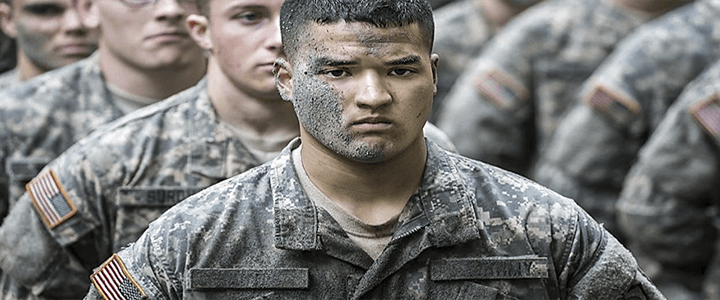In 1817, the United States Army had 8,446 soldiers. In 1917, the Army had 643,833. In 2017, the Army will have 480,00 troops. Or, maybe 460,000. Or, perhaps, 450,000.
The debate on the size of the Army is on. The Federation of American Scientists has a summary of the current proposals for the number of Regular Army soldiers at the end of FY 2017. The argument will be settled in the defense authorization bill for 2018.
Planned End State of US Army Size
The Pentagon has planned an end state of 450,000 soldiers. The House of Representatives would like to increase the authorized staffing by 5,000, to 480,000. The Senate wants to cut 15,000 and end up at 460,000.
The last time that the authorized number of Regular Army troops was this low was in 1940. The missions that the Army will undertake, regardless of the staffing level, will require the continued use of National Guard and Reserve soldiers. The burden of filling in the empty slots in Army missions will continue to be borne by part-time, citizen soldiers.
The Congressional Research Service details the various aspects of the discussion in a September 2 report. The House believes that increasing the authorized strength of the Army will reduce the strains being place upon the Guard and Reserve. The Senate is concerned with the costs of staffing levels. The Administration notes that simply setting a staffing level does not take into account the types of missions that the Army is called upon to engage in.
Much of the discussion revolves around the Army’s plans to continue to increase its training capacity with respect to our allies overseas. The need to provide training in Afghanistan and Iraq continues. The new NATO members in Eastern Europe require a significant portion of training assets. Africa and East Asia also continue to be areas of concern.
Army aviation, which some see as the stepchild of the Army, is once again a topic in budget talks. The Regular Army and the National Guard split those units, and the numbers assigned to each enters into the funding needs. In addition, air defense units are being highlighted. Most of the current units, primarily National Guard, are assigned to homeland defense. Should more be available for overseas duty?
Army Investment in Cyber Warfare
The Army continues to invest in its cyberwarfare capabilities. It has expanded, and plans to continue expanding, the ranks of Special Forces. The recent North Korean nuclear test emphasizes the role of the Army in the defense of the Republic of Korea. There are a great many pieces to the Army budget puzzle.
In all likelihood, the Presidential election in November with the concurrent Congressional elections will change some of the players in the debate. Events throughout the world in the next few months will also have a part in the discussion. The 2018 Army budget will likely not be finished until next fall, if then, and for tens of thousands of soldiers, the wait will be tense.


